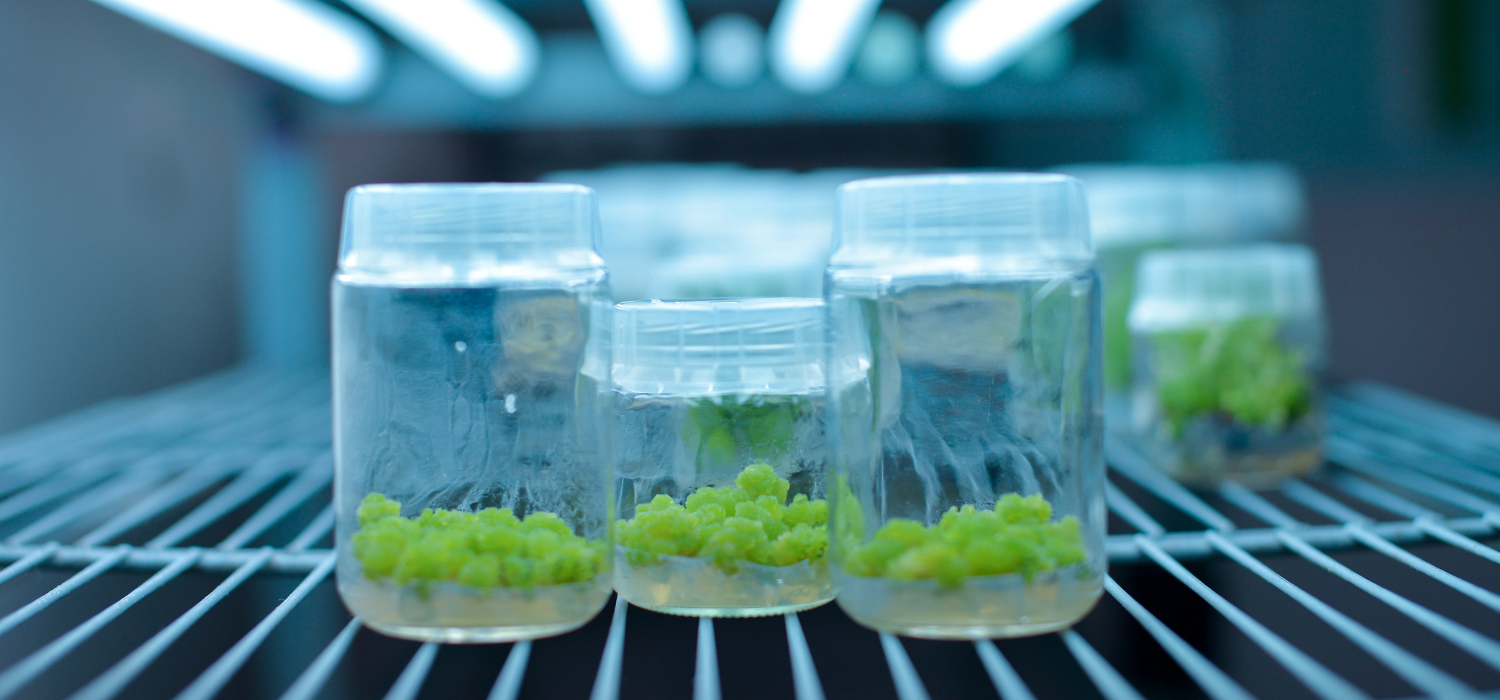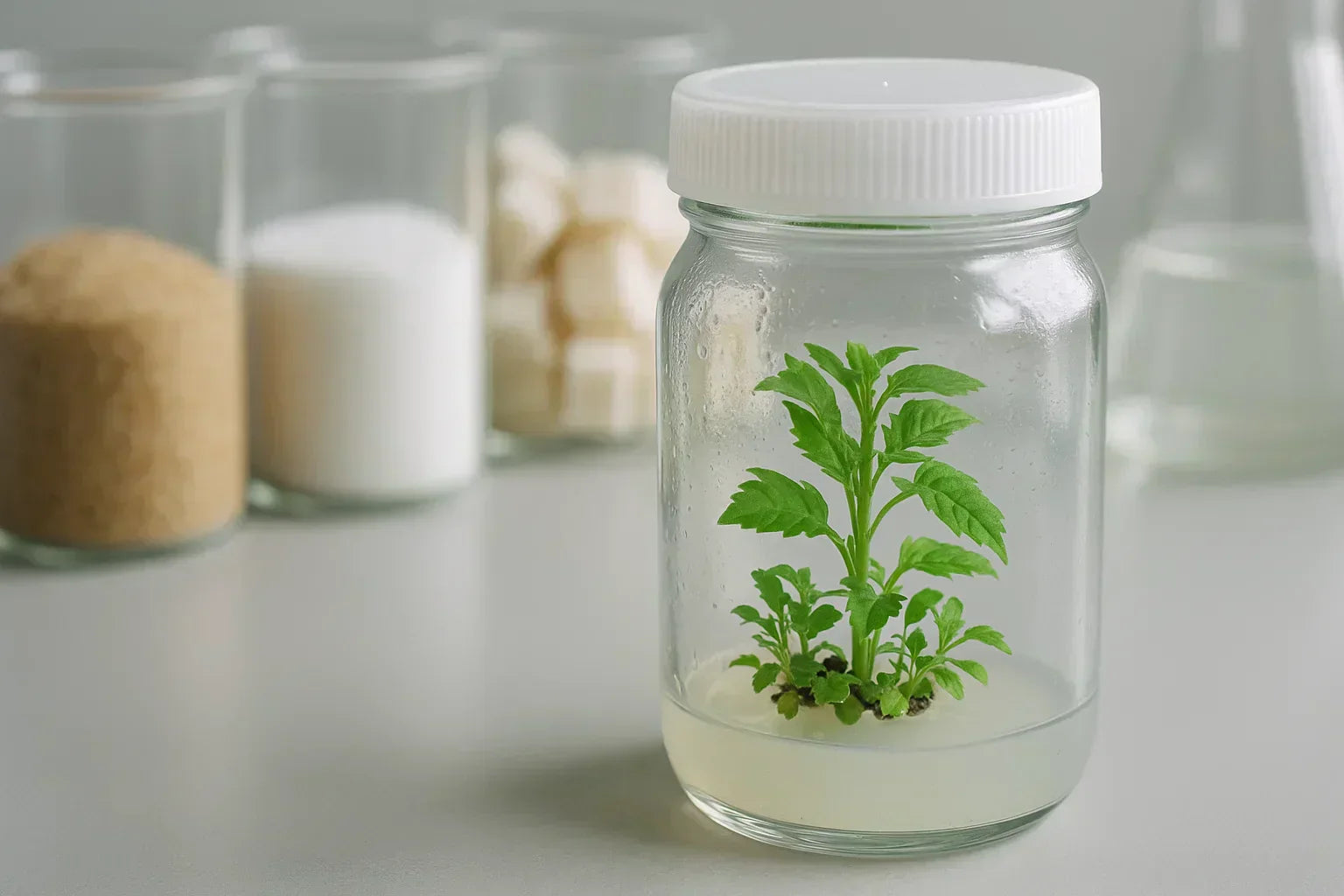
Take Advantage of The Thin Cell Layer Culture Technique!
As a content and community manager, I leverage my expertise in plant biotechnology, passion for tissue culture, and writing skills to create compelling articles, simplifying intricate scientific concepts, and address your inquiries. As a dedicated science communicator, I strive to spark curiosity and foster a love for science in my audience.


Thin Cell Technique Overview
Tissue culture is a wide area that includes several techniques to grow plants under in vitro conditions. The choice of which technique to utilize when growing in vitro plants depends on the purpose of growing plants, the type of explant you want to use, and the species you want to work on. All techniques are not suitable for growing all the species of the plants; it’s essential to understand the goal of the tissue culture of plants.
The thin cell layer is one of the tissue culture techniques that help culturists understand the growth and development of the plant using thin layers of cells and tissues cut longitudinally and transversally. This technique has wide application in the field of in vitro propagation of ornamental plants, horticulture plants, and medicinal plants.
This article discusses a brief history, concept, and applications of thin cell layer technology. Let’s begin!
History and definition of Thin cell Layers (TCL) Technology
Using tobacco in 1939, Tran Than Van was the first person to introduce the concept of the thin cell layer technology to control the organogenic potential of the plant. He explained the possibility of reprogramming and regeneration of the whole plant using thin layers of differentiated cells. In tissue culture, the choice of explant is a deciding factor in the success of the tissue culture protocol. The size, shape, age, genotype, and origin of the explant decide how the explant of a particular species will perform in the culture. Later, Teixeira da Silva (2011) and Dobránszki (2014) introduced two new factors, growth correction factor, and geometric factor. These factors can enhance the overall productivity output of thin cell layers compared to other conventional explants.
How do you define thin cell layers (TCL) system?
It is a system in which a thin cell layer is excised from the different plant organs including stem, leave, root, floral inflorescence, flower primordia or floral organs, cotyledon, hypo-/epicotile, apical zone, or embryo into longitudinal or transversal fashion.
Longitudinal thin cell layers involve the excision of a group of cells that will have similar properties or the same kinds of cells will be present in the layer. Whereas, transverse thin cell layers involve the excision of a group of cells having different types of cells in a layer. For example, a transverse thin cell layer can include epidermal, cortical, or cambium tissue types in the same layer and longitudinal thin cell layers will have a monolayer of epidermal cells.
What are the model systems to study the thin cell layers system (TCLs)?
TCL is extensively used by researchers to study the organogenic potential or totipotency of several plants. Given below is an example of a few plants that are considered as a model system for the thin cell layers system:
- Arabidopsis thaliana: This model system is best to study flower formation and adventitious root formation.
- Antirrhinum majus (Snapdragon): It is used to study the flowering processes of plants.
- Nicotiana tabacum (tobacco): It’s an extensively used model plant. It can be used to study root formation, flower formation, and bud formation by using longitudinal thin cell layer explant.
- Chrysanthemum: This has been used to study the effect of numerous media additives on the formation of roots, shoots, and embryos of ornamental plants.
Application of thin cell layer system (TCLs)
The thin cell layer system provides a highly-organized (and considered to be an essential) system to study the growth and development of plants. Given below is a list of some of the applications of the thin cell layer system.
- Thin cell layer systems are used for the mass production of orchids.
- Direct bud organogenesis was achieved in the African violet using a transverse thin cell layer inoculated in a media containing strictly controlled auxin: cytokinin ratio. The TCL system has been found to produce 100-200 shoots per transverse TCLs within 4 weeks in culture.
- Shoot regeneration has been observed in Amaranthus using transverse TCLs of seedlings, only after 1 week, in MS media containing 3 μM TDZ.
- TCLs system is used to mass propagate Gladiola. It’s done using transverse thin cell layers of corms, cultured on MS media containing 10 μM benzyl amino purine (BAP or BA).
- In Iris plants, TCL is used to regenerate the whole plant through somatic embryogenesis using transverse thin cell layers. Thin cell layers are prepared from the rhizome containing leaf bases and cultured on LS media supplemented with 4.52 μM 2,4-D and 0.46 μM Kin for callus induction. The callus was then transferred to a fresh LS medium containing 0.49 μM IBA and 4.60 μM Kin.
- The thin cell layer system has also been used for the mass propagation of many vegetable crops including beans, cowpea, lupine, rapeseed, rice, sorghum, sesame, sugarcane, and spinach.
- Apart from ornamental and vegetable plants, the thin cell layer system has been used for the micropropagation of several medicinal and woody plants.
Conclusion
The thin cell layer is an advanced in vitro technique for organ generation in plants using a group of cells. The technique also has essential usability in applied biotechnology such as in synthetic seeds technology, cryopreservation, in vitro production of mutations, and genetic transformations. Though the technique is simple and effective it holds the potential to broaden its application in more horticulture and floriculture crops. Further studies on this technique can help to better understand scaling up processes of this system for more industrial applications.
References
- Nhut, D. T., Van Le, B., Tran Thanh Van, K., & Thorpe, T. (Eds.). (2003). Thin Cell Layer Culture System: Regeneration and Transformation Applications. doi:10.1007/978-94-017-3522-3.
- Jaime A. Teixeira da Silva, and Judit Dobránszki (2015). Plant thin cell layers: update and perspectives. Folia Horticulture, 27/2 (2015): 183-190. DOI: 10.1515/fhort-2015-0029.
- Teixeira da Silva, J. A., & Dobránszki, J. (2013). Plant Thin Cell Layers: A 40-Year Celebration. Journal of Plant Growth Regulation, 32(4), 922–943. doi:10.1007/s00344-013-9336-6.
- Teixeira da Silva, J. A., & Dobránszki, J. (2014). Dissecting the Concept of the Thin Cell Layer: Theoretical Basis and Practical Application of the Plant Growth Correction Factor to Apple, Cymbidium, and Chrysanthemum. Journal of Plant Growth Regulation, 33(4), 881–895. doi:10.1007/s00344-014-9437-x.
- Da Silva, J. A. T. (2009). Thin Cell Layers: Power-Tool for Organogenesis of Floricultural Crops. Methods in Molecular Biology, 377–391. doi:10.1007/978-1-60327-114-1_32.
- Nhut, Duong & Nguyen, Hai & Nguyen, Trinh-Don & Teixeira da Silva, Jaime & Tran Van, Khanh. (2006). Latest Applications of Thin Cell Layer (TCL) Culture Systems in Plant Regeneration and Morphogenesis.
Blog Categories
View by Level
Popular Blogs

Light and Temperature Control in Tissue Culture: Why It’s Critical
Introduction Meeting the global demand for high-quality plants—whether for agriculture, horticulture, or conservation—is a significant challenge. Traditional propagation methods are...
Read More
Why Carbohydrate Sources Matter in Plant Tissue Culture Media
Introduction Ever wondered why a simple sugar can make or break your plant tissue culture success? It’s a question that...
Read MoreSubscribe to Our Newsletter








Join the conversation
Your email address will not be published. Required fields are marked